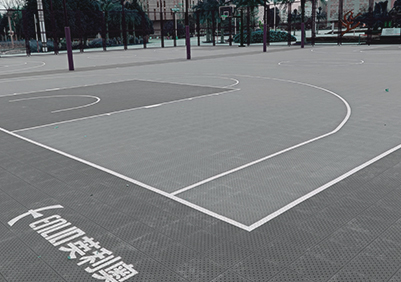Dec . 28, 2024 11:02 Back to list
play area soft flooring
The Importance of Soft Flooring for Play Areas
Creating a safe and enjoyable environment for children is paramount, especially in play areas. One of the most critical components of such environments is the flooring. Soft flooring options are becoming increasingly popular in playgrounds, daycare centers, and home playrooms. This article will delve into the benefits, types, and considerations of soft flooring for play areas, ensuring that both children and caregivers can enjoy a secure and engaging space.
Benefits of Soft Flooring
1. Safety First The primary advantage of soft flooring is safety. Falls are a common occurrence in play areas, and soft flooring absorbs impact, reducing the risk of injuries. Materials like foam, rubber, and cushioned carpet tiles can significantly lower the chances of cuts, bruises, and more severe injuries for children who are often prone to accidental tumbles and falls.
2. Comfort Soft flooring is not only safer but also more comfortable for children to play on. Unlike harder surfaces like concrete or tile, soft flooring provides cushioning that supports active play, allowing children to engage in various activities without discomfort or fatigue. This added comfort can encourage longer playtime, fostering social interaction and physical development.
3. Thermal Insulation Soft flooring can act as an insulator, keeping the floor warm during colder months. This feature is particularly beneficial in indoor play areas where children may be playing without shoes. A warmer floor enhances comfort and encourages children to play actively.
4. Noise Reduction Another significant benefit of soft flooring is its ability to dampen sound. In a bustling play area, noise can become overwhelming, both for the children playing and the adults supervising. Soft flooring materials can absorb sound, creating a calmer environment conducive to imaginative play and learning.
5. Easy Maintenance Many soft flooring options are designed to be low-maintenance. They are often stain-resistant, easy to clean, and durable, making them ideal for play areas where spills and messes are common. Regular cleaning with appropriate products is generally sufficient to keep these surfaces in good condition.
Types of Soft Flooring
1. Foam Tiles Interlocking foam tiles are popular for home playrooms and daycare settings. They are lightweight, easy to install, and available in various bright colors and patterns that can stimulate children's creativity. Foam tiles are also water-resistant, making them suitable for messy play.
play area soft flooring

2. Rubber Flooring Rubber is another excellent choice for outdoor and indoor play areas. It is incredibly durable and can withstand heavy foot traffic. Additionally, rubber flooring often comes in various thicknesses, depending on the level of cushioning needed.
3. Carpet Tiles Carpet tiles provide warmth and softness while allowing for easy replacement of damaged sections. They come in numerous styles and colors, making it easy to create a visually appealing play area. However, it is essential to choose carpet tiles that are stain-resistant and designed for high-traffic areas.
4. Vinyl Flooring Vinyl is a versatile option that combines durability with softness. Modern vinyl flooring can mimic the appearance of natural materials while providing a cushioned surface. It is also water-resistant, making it suitable for various play activities.
Considerations When Choosing Soft Flooring
1. Safety Standards Always ensure that the flooring material meets safety standards for children's play areas. Look for certifications that guarantee impact absorption, non-toxicity, and slip resistance.
2. Aesthetic Appeal The visual aspect of a play area can significantly affect children’s engagement. Choose soft flooring that complements the overall design and promotes an inviting atmosphere.
3. Age Appropriateness Different age groups may have varying needs regarding flooring. For example, toddlers may benefit from softer materials with more cushioning, while older children might prefer different textures and stability.
4. Budget Finally, consider your budget when selecting soft flooring. There are options available across various price ranges, so it's essential to find a balance between quality and cost-effectiveness.
Conclusion
In summary, soft flooring is a vital aspect of creating safe, comfortable, and engaging play areas for children. By providing cushioning, thermal comfort, and noise reduction, soft flooring helps facilitate active play while minimizing injury risks. With a variety of options and considerations, caregivers and facility planners can create a welcoming environment that fosters children's growth and happiness. Investing in quality soft flooring is an investment in children's safety and well-being, ensuring that playtime remains a fun and enriching experience.
-
Premium Outdoor Court Tiles: Durable & Slip-Resistant
NewsAug.04,2025
-
Premium Outdoor Tennis Court | Durable & Weather-Resistant
NewsAug.03,2025
-
Wood Sports Flooring Enhanced by GPT-4-Turbo | Top Performance
NewsAug.02,2025
-
Sport Court Tiles with AI Innovation | Durable & Safe
NewsAug.01,2025
-
Vinyl Carpet Flooring | Durable & Waterproof Design
NewsJul.31,2025
-
Premium Basketball Board Stand with GPT-4-Turbo AI
NewsJul.31,2025

